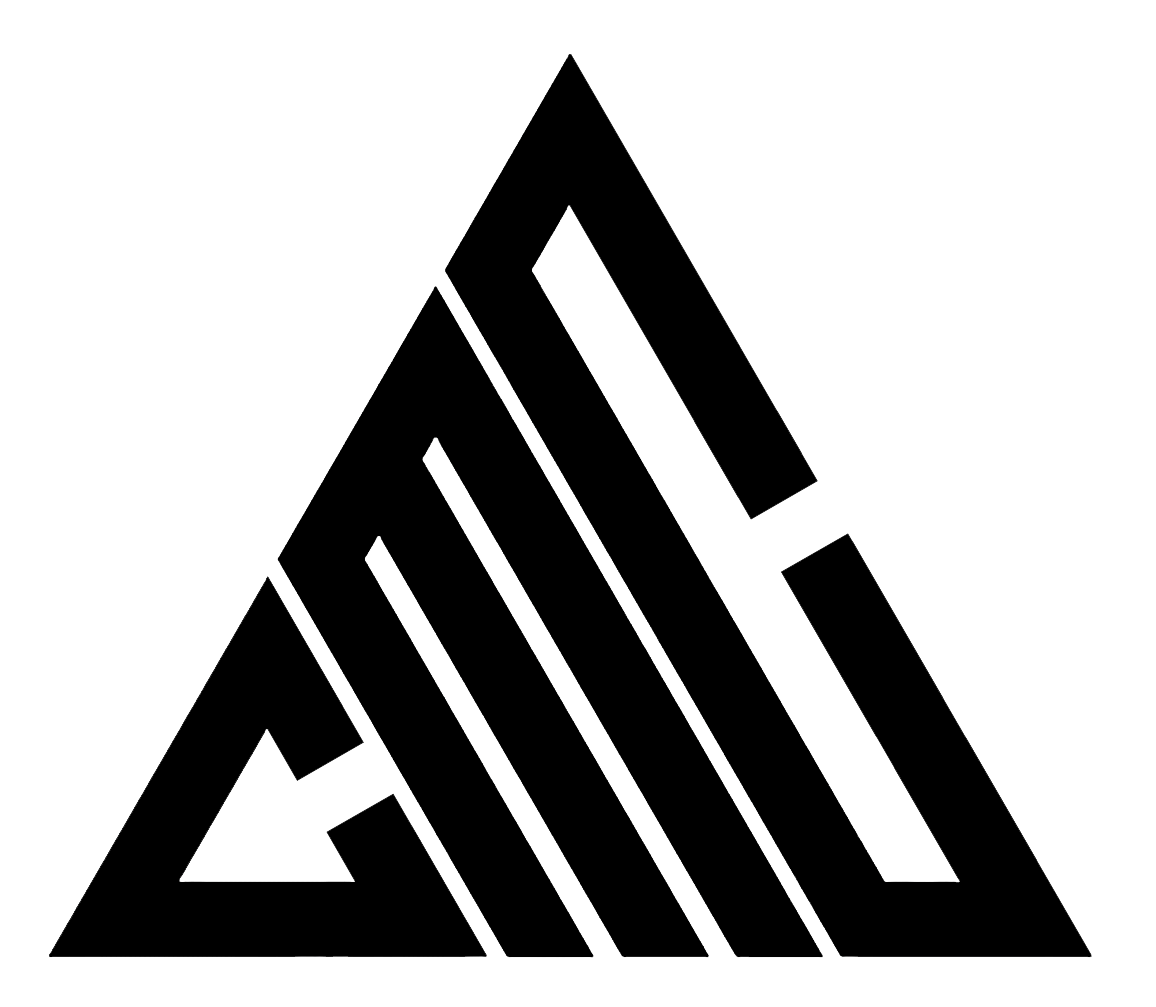Bridging Gaps: A Guide to Moving Beyond Plateaus

gap / noun. An unfilled space; a break in continuity; a wide divergence in development.
We all have gaps in our lives.
They occur naturally as we learn, because we tend to learn things in segments that are not always immediately connected. For example, Let’s imagine you’ve never used a smartphone (we don't know why; maybe you're afraid of them, but for whatever reason, you've never owned a phone), and then one day you decide to purchase the new iPhone 15. Congratulations! Your learning process begins with the knowledge of how to turn it on, followed by learning segments like: how to make a phone call, how to text, how to email, how do download games from the App store, etc. These segments are not necessarily connected, but they each help you better understand the functionality of a smartphone. As your learning continues, various information gaps are closed and you become more adept in using the cellular device. Instagram, Twitter, text, Subway Surfers, Uber, WhatsApp, camera, calendar, Wallet, Maps - you are hooked! But as you continue to use the preferred features on the phone, new learning slows down, and your interest in exploring the device's capabilities fizzles away. Although the phone has many other amazing features, you stick with what works, you feel confident in your relationship with the phone, and gaps are left unattended. These gaps prevent you from becoming a true master of the smartphone, and instead, the phone is ever only partially-realized.
This seems harmless enough. How many of us really need to be masters of our phone? But this example highlights an important trend in how we learn and grow. [See Fig 1.]
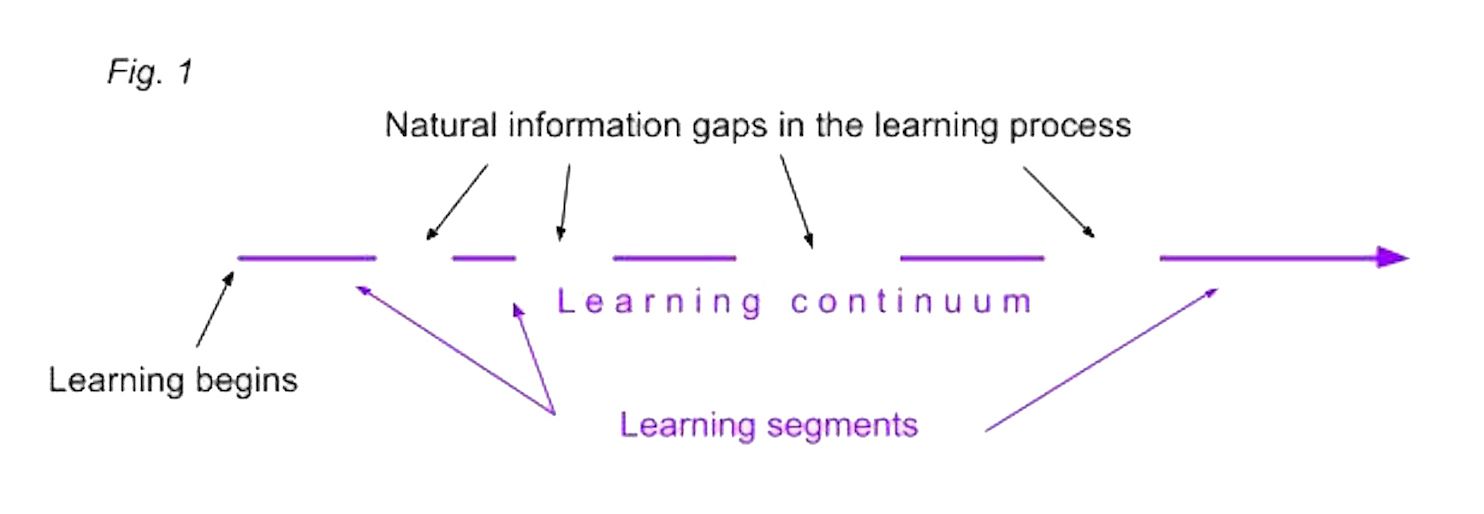
Information gaps are natural, but when major gaps are left unattended, in any area of our lives, we can become stuck and frustrated. For example, gaps in a relationship can lead to unhealthy habits or destructive patterns in connecting. Gaps in self-care can lead to mental, emotional and physical health complications. Gaps in our fitness journeys can lead to discouragement and injury.
The difference between casual users, or hobbyists who may struggle with disappointment during a plateau in development, and masters who enjoy fluency, is the intentional bridging of these information gaps.
The obstacle that we all face when learning and growing is something I call the “redline.” New learning tends to happen quickly, for numerous reasons (we are excited, motivated, committed, and the first steps of anything are often the most user-friendly). As the psyche wears off our learning plateaus. When we attempt to reach more advanced levels we quickly realize that these levels are much more demanding than the earlier stages, requiring more time, dedication, sacrifice, and adaptation. So much so, that we can often choose (even subconsciously) to stay on the plateau, where we are somewhat capable, somewhat knowledgeable, and most importantly, comfortable. The redline is that invisible barrier between the plateau and the road to mastery. [See Fig 2.]
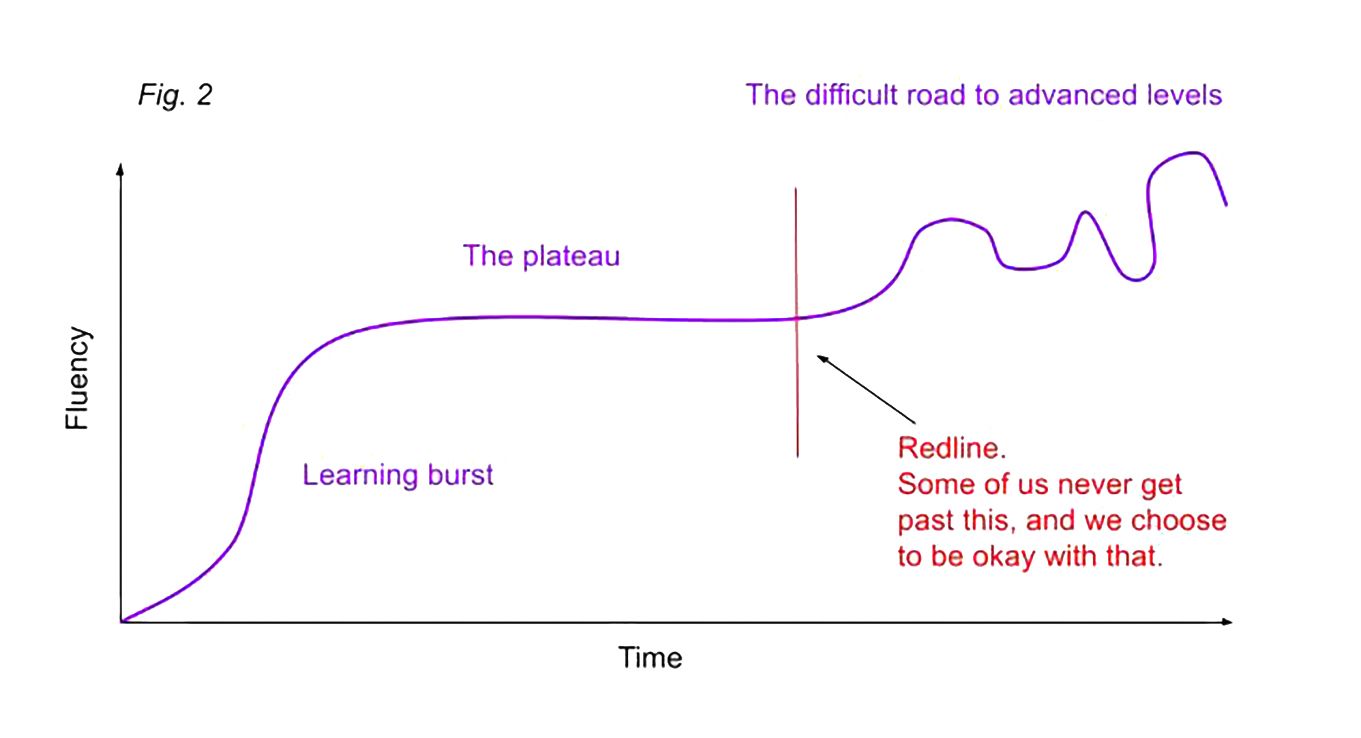
It’s important to recognize that plateaus are a natural part of becoming better at anything. And sometimes we need to ride them for a while. The redline is that moment when we DECIDE: I’m ok with this place that I’m in. Or, I’ll do whatever it takes to grow and become better. But we don't always choose to remain plateaued consciously. Often the experience of a plateau is frustrating and confusing, and we can find ourselves stuck in a common cycle:
We begin a new training program. Our psyche is high. We make a killer workout playlist on Spotify, maybe even buy some new gear, and then we hit the gym like our life is going to be changed forever! Eventually (sometimes after only a few weeks), life begins to creep in. And when it does, both learning and psyche slow down. Life has a way of interrupting our plans, and when it does, our enthusiasm settles down, we become frustrated, tired, and we plateau. Our excuses for plateauing tend to look like this:
- Injury: Often this includes minor tweaks or even just muscle soreness. But it can be enough to slow us down and smother our commitment level.
- Busy: Work, school, visiting grandma, oil changes, buying groceries. Feeling busy is a huge reason for not getting to the gym.
- Stress / fatigue: This is a big one. Netflix is right there, our sofa is so comfy, and the gym is so far away. Plus, we need to get up early for work, and we are so tired right now. Before we know it we've taken another night off.
- Cost: We just don’t feel like we can afford it anymore (membership fees, coaching costs, additional courses, etc).
- Discouragement: Not getting the results we were expecting in the timeline we wanted.
These excuses allow us to be okay with living on the fitness plateau. However, as time passes a new source of inspiration is inevitable. Maybe we re-watch Rocky, or hear a motivating podcast, and we realize the need to get off our asses and back in the gym! So we begin again to hunt for the next great training program, or the next coach, and the process repeats. This is what I call “The Fitness Frustration Cycle.” See Fig 3.
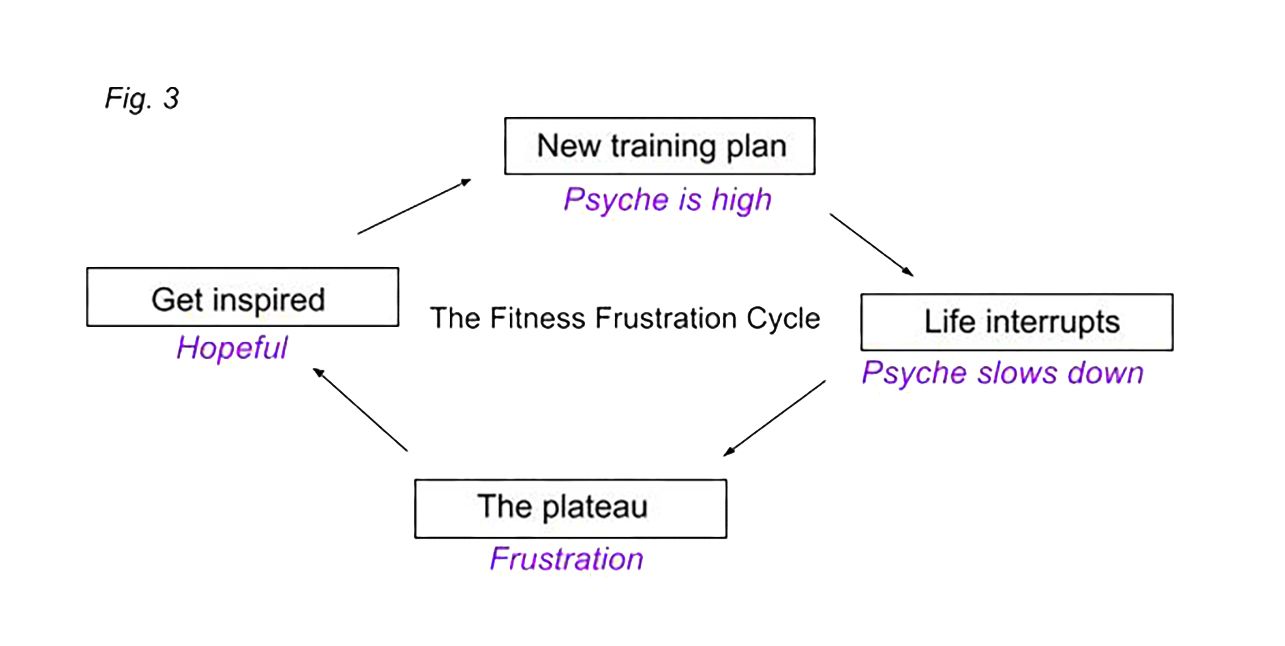
This pattern is evident in other significant areas of our lives, including relationships/marriage, finances, personal health and wellness, and work. And for some of us, our whole lives are lived on a variety of plateaus. We never move past the redline. We never learn to bridge the gaps. Bacause the road to advanced levels is rocky and difficult. In fact, it can be really difficult, requiring more sacrifice and dedication than we expected. But the road to fluency is not rocky forever. And this is the point! Once we fully commit to pushing past the redline, learning gaps will close and learning continuity will increase. We will start to become more fluent. We will begin to reach a higher-level continuum. See Fig 4.
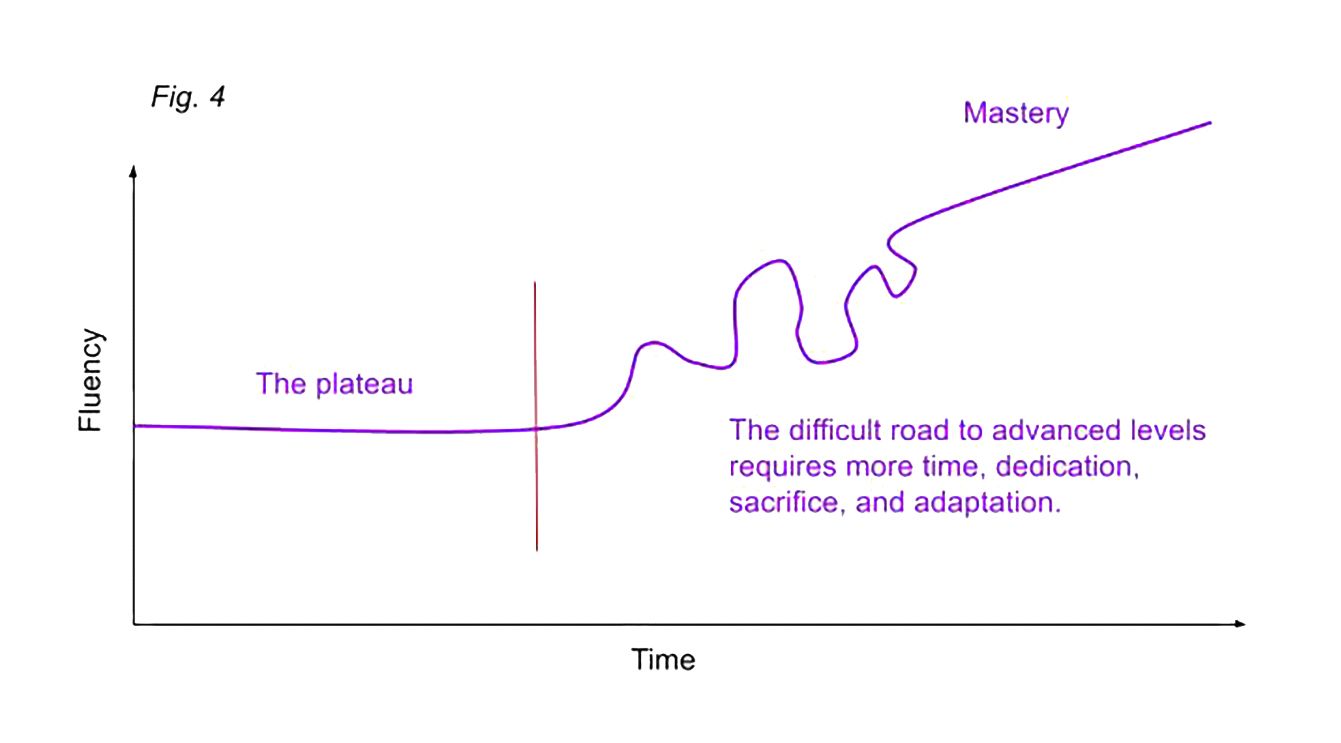
My wife Blaise and I have been together for 30 years. And I’ll tell you straight up, that’s not easy. We have worked through more issues than I can remember; many minor, some major, but all of them required the both of us to choose to move past the redline. For this relationship to work, we needed to address patterns of relating and bad habits, forgive mistakes, make sacrifices and lifestyle adjustments, and CHOOSE to make our relationship a priority over all other things. After that initial “honeymoon” phase when were first together, we discovered our gaps (some hers, the huge majority of them mine), but each gap needed to be bridged. We have spent the last 30 years fully engaged in the process of being a couple, the equivalent of earning of a Masters and 4 PhD’s in Relationship Prosperity.
Overall, Blaise and I have always had a strong and happy relationship, but we are happier now, after 3 decades, than we have ever been. Our relationship is fluent. We are masters. And we enjoy each other with a deep and profound sense of connectedness. This is what the road to mastery looks like for everyone who overcomes the rocky, difficult learning segments in any area of their lives.
Bill Gates said, “everyone needs a coach.” Why is that? Because we can’t always see the patterns of behaviour we are expressing. We can’t always see the plateaus we have settled into. The role of the coach is to look for the gaps from an outside perspective, and then work with you to build functional, realistic strategies for bridging those gaps.
Fluency is possible for anyone who is willing to make the necessary sacrifices, to bridge gaps in leaning and conditioning, to test themselves and their potential. If you want to do that, I recommend starting with goal setting. Check out: GOALS - A Practical Workbook for Setting & Crushing Your Goals.
